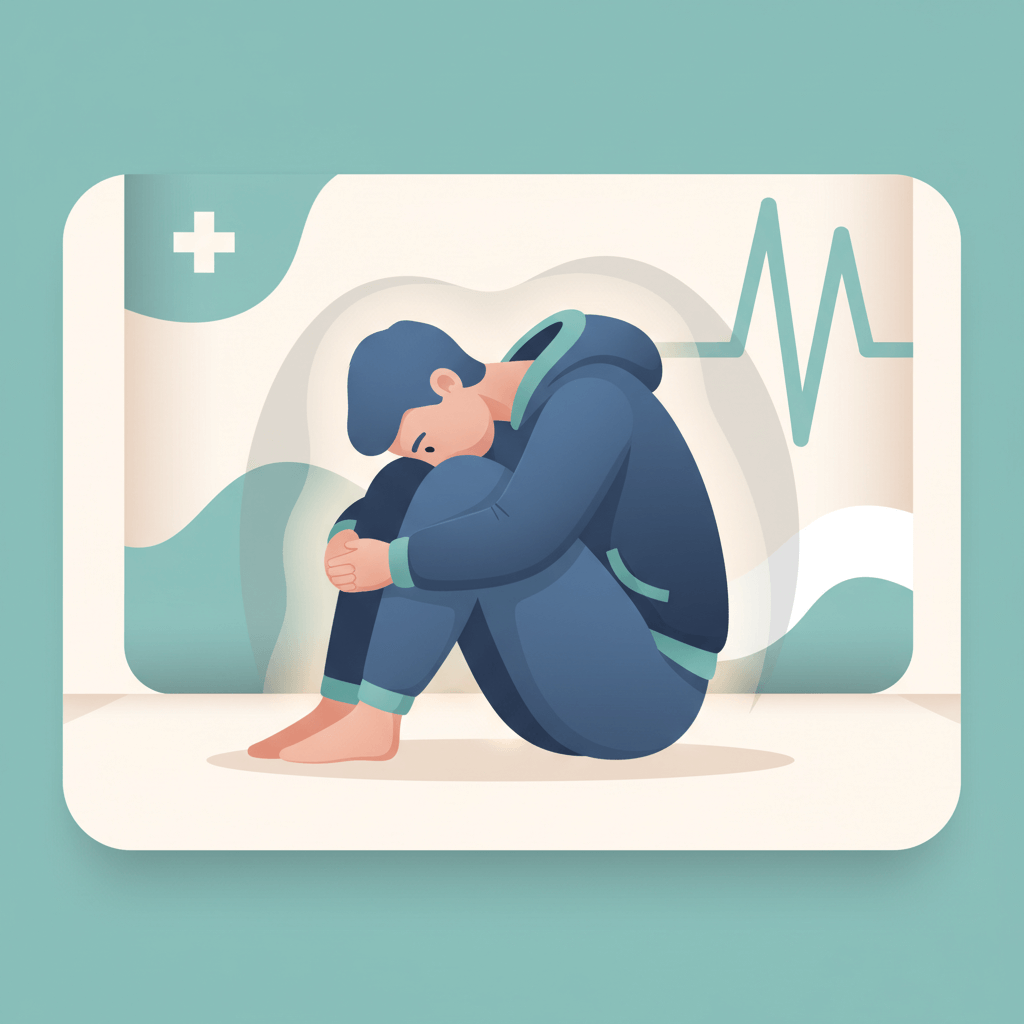More Than Just a Posture
You may have seen unsettling images or videos of individuals seemingly frozen in a bent-over or slouched position on city streets. Perhaps you witnessed this disturbing scene firsthand while walking through an urban area. This phenomenon, often called the "fentanyl fold," or "fenty fold" represents far more than an uncomfortable posture—it's a visible manifestation of our nation's escalating opioid crisis.
This distinctive stance isn't a conscious choice or a moment of exhaustion. Instead, it signals a dangerous physiological response to fentanyl, one of the most potent synthetic opioids flooding our communities. The person trapped in this position faces immediate life-threatening danger, yet many bystanders walk past without understanding the gravity of what they're witnessing.
Understanding what the "fentanyl fold" represents, why it occurs, and how to recognize it can literally mean the difference between life and death. This knowledge empowers you to become an emergency responder when every second counts. Throughout this article, we'll examine this alarming symptom, explore the complete spectrum of fentanyl overdose signs, and provide clear, actionable steps for emergency intervention.

What is the "Fentanyl Fold"?
The "fentanyl fold," also known as the "fentanyl lean" or "dope lean," describes a distinctive posture where an individual bends sharply at the waist, appearing frozen in an unnatural position. This isn't the gradual slumping you might see from someone who's simply tired or intoxicated with alcohol.
The visual characteristics are unmistakable once you know what to look for. The person appears slumped or slouched forward dramatically, sometimes with their upper body nearly touching their knees. Their position looks involuntary and rigid, as if they've been paralyzed mid-motion. You might also notice a subtle wobbling or teetering motion as their body struggles desperately to maintain balance against gravity.
At Prescott House, we've encountered individuals who've survived these episodes, and their descriptions are chilling. They often report having no memory of the folding position, describing it as if someone else was controlling their body while their consciousness flickered in and out.
Why Does Fentanyl Cause Users to Bend Over?
The "fentanyl fold" occurs due to fentanyl's devastating impact on the central nervous system. As a powerful depressant, fentanyl doesn't just create euphoria—it systematically shuts down critical bodily functions, starting with the complex systems that maintain posture and balance.
Extreme muscle relaxation strikes first. The core muscles responsible for keeping us upright simply stop functioning properly. Think of it like someone slowly turning down the power to your body's internal scaffolding. The muscles that normally work automatically to keep you standing become unreliable, creating that characteristic forward bend.
Simultaneously, fentanyl depresses the central nervous system so severely that it slows brain activity controlling alertness and coordination. Your body's postural reflexes—those automatic adjustments that keep you balanced without conscious thought—essentially shut down. The person becomes unable to stay upright, yet remains semi-conscious enough to avoid complete collapse.
This dramatic physical response testifies to fentanyl's extreme potency. We're dealing with a substance up to 50 times stronger than heroin and 100 times more potent than morphine. The "fold" represents the body's desperate attempt to remain functional while under the influence of such an overwhelming chemical assault.
Comprehensive Signs of a Fentanyl Overdose
While the "fentanyl fold" serves as one of the most visually striking indicators of fentanyl use and potential overdose, it's crucial to recognize the complete spectrum of warning signs. Understanding these symptoms can help you identify when someone needs immediate medical intervention, even before they reach the dramatic folding stage.
Physical Warning Signs
The physical manifestations of fentanyl overdose progress rapidly and often follow a predictable pattern. Respiratory depression stands as the most dangerous symptom—breathing becomes extremely shallow, irregular, or may stop entirely. You might notice long pauses between breaths, a rattling sound when the person breathes, or lips and fingernails turning blue or purple due to lack of oxygen.
Skin changes provide additional critical indicators. Beyond the blue discoloration around the mouth and extremities, the person's skin may become cold and clammy to the touch. Their complexion might appear pale or grayish, particularly around the face and neck area. At Prescott House, our medical team emphasizes that these skin changes often appear before the person loses consciousness completely.
Cardiovascular symptoms develop alongside respiratory issues. The pulse becomes weak, slow, or irregular. Blood pressure drops significantly, which contributes to the person's inability to maintain normal posture. Their body temperature may also drop below normal levels, creating a dangerous combination of symptoms that requires immediate medical attention.
Behavioral and Cognitive Signs
Before reaching the "fold" stage, individuals often display concerning behavioral changes that serve as early warning signs. Extreme drowsiness or "nodding off" frequently occurs, where the person appears to fall asleep mid-conversation or while standing. This isn't normal tiredness—it's a profound level of sedation that makes the person difficult to rouse.
Mental confusion intensifies rapidly with fentanyl use. The person might appear disoriented, unable to recognize familiar people or places, or give incoherent responses to simple questions. Their speech often becomes slurred or incomprehensible, and they may seem to drift in and out of consciousness unpredictably.
Loss of coordination becomes increasingly apparent as the drug takes effect. Before assuming the characteristic fold position, individuals often stumble, sway, or have difficulty performing basic motor functions like walking or picking up objects. These coordination problems represent the drug's impact on the brain's ability to control movement and balance.

The Critical Difference: Overdose vs. Intoxication
One of the most dangerous misconceptions about fentanyl use involves the assumption that someone displaying the "fentanyl fold" is simply "high" rather than experiencing a life-threatening overdose. This misunderstanding has cost countless lives and represents a critical knowledge gap that everyone should understand.
During our years treating individuals with opioid use disorders at Prescott House, we've learned that the line between fentanyl intoxication and overdose is razor-thin and often invisible to observers. What appears to be someone "just getting high" may actually be someone minutes away from respiratory failure and death.
The key distinction lies in responsiveness and vital signs. Someone who is intoxicated but not overdosing will typically respond to loud noises, physical touch, or their name being called, even if their responses are delayed or confused. They maintain relatively stable breathing patterns, though they may be slower than normal.
In contrast, someone experiencing a fentanyl overdose shows minimal or no response to external stimuli. They cannot be easily awakened, even with loud noises or physical stimulation. Their breathing becomes dangerously slow (fewer than 10 breaths per minute), shallow, or irregular. Most critically, their skin color changes, particularly around the lips, fingernails, or face, indicating insufficient oxygen in their bloodstream.
The "fentanyl fold" itself often represents a borderline state between severe intoxication and full overdose. While the person hasn't completely lost consciousness, their vital functions are severely compromised. This makes immediate intervention crucial—waiting to see if their condition improves naturally could be fatal.
Another crucial factor involves the unpredictability of fentanyl's effects. Unlike other opioids, fentanyl's potency means that someone can transition from appearing "fine" to experiencing a life-threatening overdose within minutes. The margin for error is virtually nonexistent, which is why any concerning symptoms should be treated as a potential emergency.
For family members and friends, this distinction becomes particularly important. The urge to let someone "sleep it off" or avoid calling emergency services due to legal concerns can be literally fatal when fentanyl is involved. Understanding that the "fentanyl fold" represents a medical emergency, not just drug use, can save lives and reduce the tragic consequences of delayed intervention.
Conclusion: Knowledge Saves Lives
The "fentanyl fold" serves as more than just a disturbing street scene—it represents a medical emergency unfolding in real time. This distinctive posture, where individuals appear frozen in an unnatural bent position, signals that someone's life hangs in the balance. Understanding this visual cue, along with the comprehensive signs of fentanyl overdose, transforms ordinary citizens into potential lifesavers.
The critical lessons from this discussion extend beyond simple recognition. The razor-thin line between fentanyl intoxication and fatal overdose means that every second counts. When you witness someone displaying the "fentanyl fold" or other overdose symptoms, you're not observing someone who's simply "high"—you're seeing someone whose central nervous system is shutting down, whose breathing may stop at any moment, and whose survival depends on immediate intervention.
Remember the key steps: call 911 immediately, administer naloxone if available, position the person safely on their side, and stay with them until help arrives. These actions require no medical training, yet they can literally resurrect someone from the brink of death. Good Samaritan laws exist in most states to protect those who act in good faith during these emergencies, removing legal barriers that might prevent life-saving intervention.
At Prescott House, we've witnessed countless individuals who survived overdoses go on to achieve long-term recovery. The "fentanyl fold" doesn't have to be a death sentence—with proper recognition, immediate response, and comprehensive treatment, people can overcome even the most severe opioid use disorders. Every person displaying these symptoms deserves the chance to recover, to rebuild their life, and to contribute meaningfully to their community once again.
If you or someone you love is struggling with fentanyl or other opioid use, know that effective treatment is available. The same medical expertise that saves lives during overdoses can also guide people through the recovery process. Professional treatment programs offer medically supervised detoxification, evidence-based therapies, and ongoing support that addresses both the physical and psychological aspects of addiction.
Your awareness and preparedness can make you a vital link in someone's survival story. Consider obtaining naloxone, sharing this information with others, and supporting policies that expand access to treatment and harm reduction services. In the face of the fentanyl crisis, knowledge, compassion, and action represent our most powerful tools for saving lives and building hope for recovery.
References
- Learning About Fentanyl Overdose - MyHealth Alberta
- Responding to Fentanyl Overdose - California Department of Public Health
At Prescott House, Recovery Becomes Reality
Fentanyl is one of the most dangerous substances impacting individuals and families today — its extreme potency, rapid dependence, and high overdose risk can devastate every aspect of life. At Prescott House in Prescott, Arizona, we understand the unique challenges fentanyl creates for both physical and mental health. Our long-term men’s treatment program provides the structure, clinical care, and supportive community needed to safely withdraw, stabilize, and rebuild a life free from fentanyl and other substances.
- Long-Term Addiction Treatment for Men — Extended care and structured support designed for men seeking lasting recovery from marijuana addiction and substance abuse.
- Substance Abuse Treatment — Comprehensive clinical care for alcohol and drug dependence, including marijuana/THC addiction.
- Gambling Addiction Treatment — Support for men struggling with compulsive gambling and accompanying behavioral challenges.
- Sex & Process Addiction Programs — Compassionate treatment for compulsive sexual behavior and pornography addiction.
- Dual Diagnosis Treatment — Integrated mental health and addiction treatment for anxiety, depression, trauma, and co-occurring disorders. Marijuana addiction in our expieriience is most often coupled with mental healh.
👉 Learn more about our programs →








-60559.webp)




